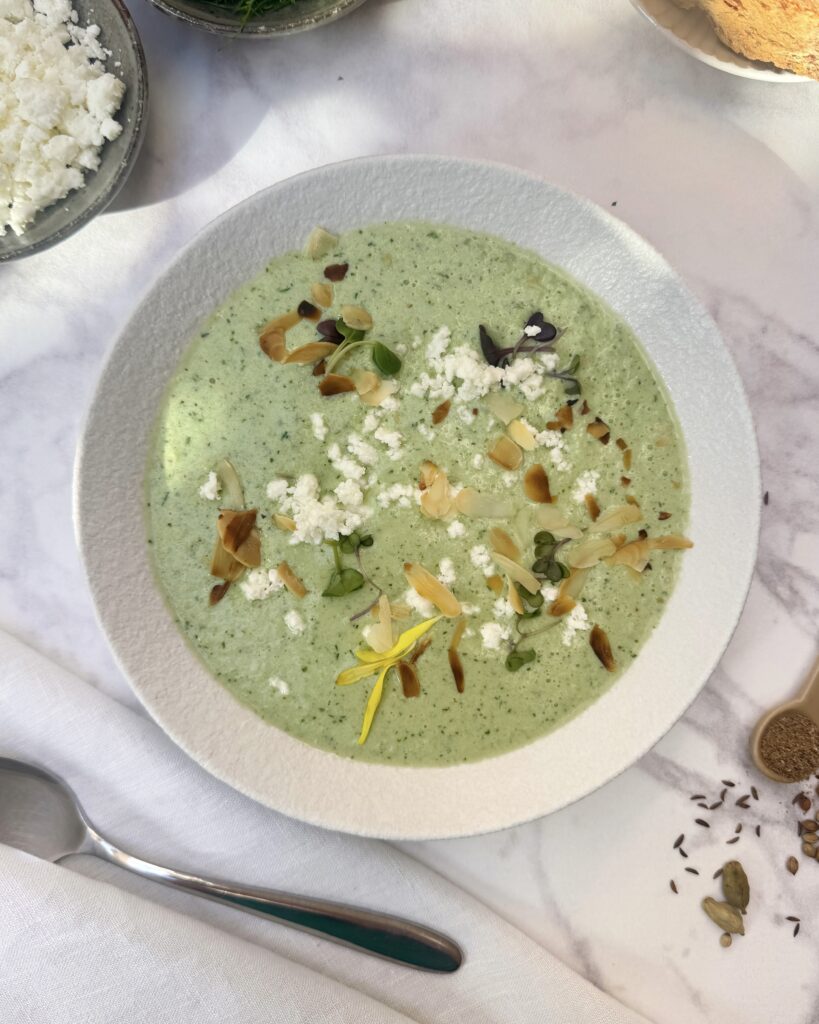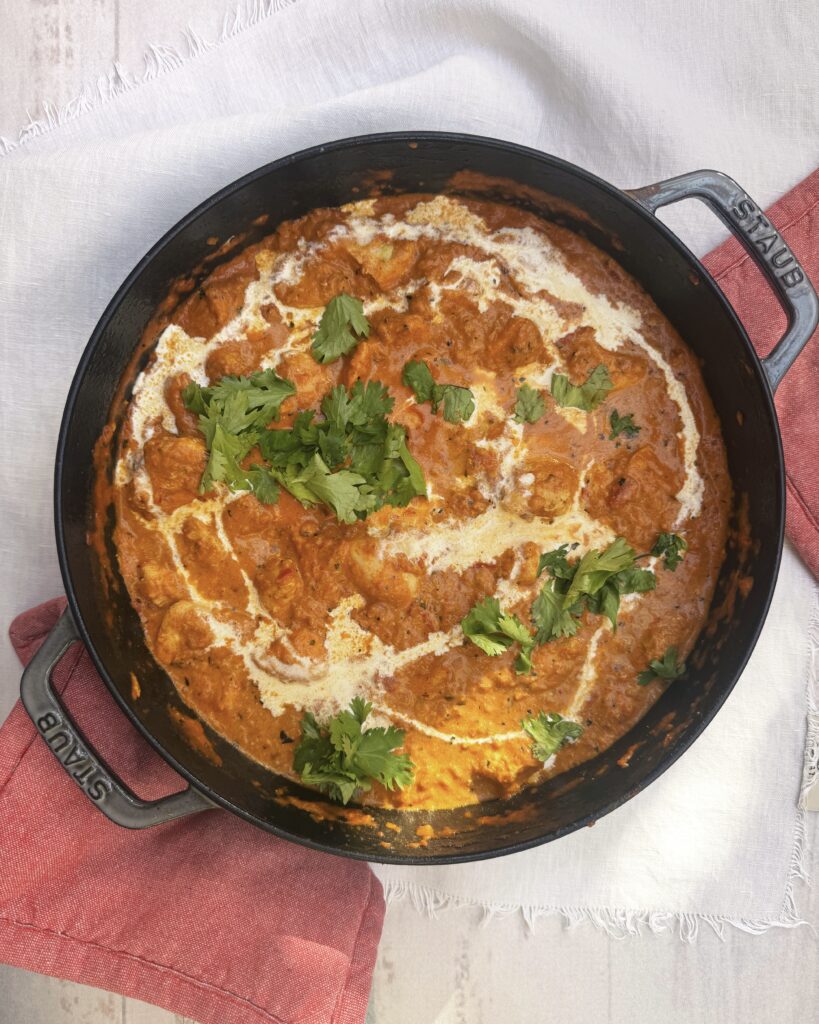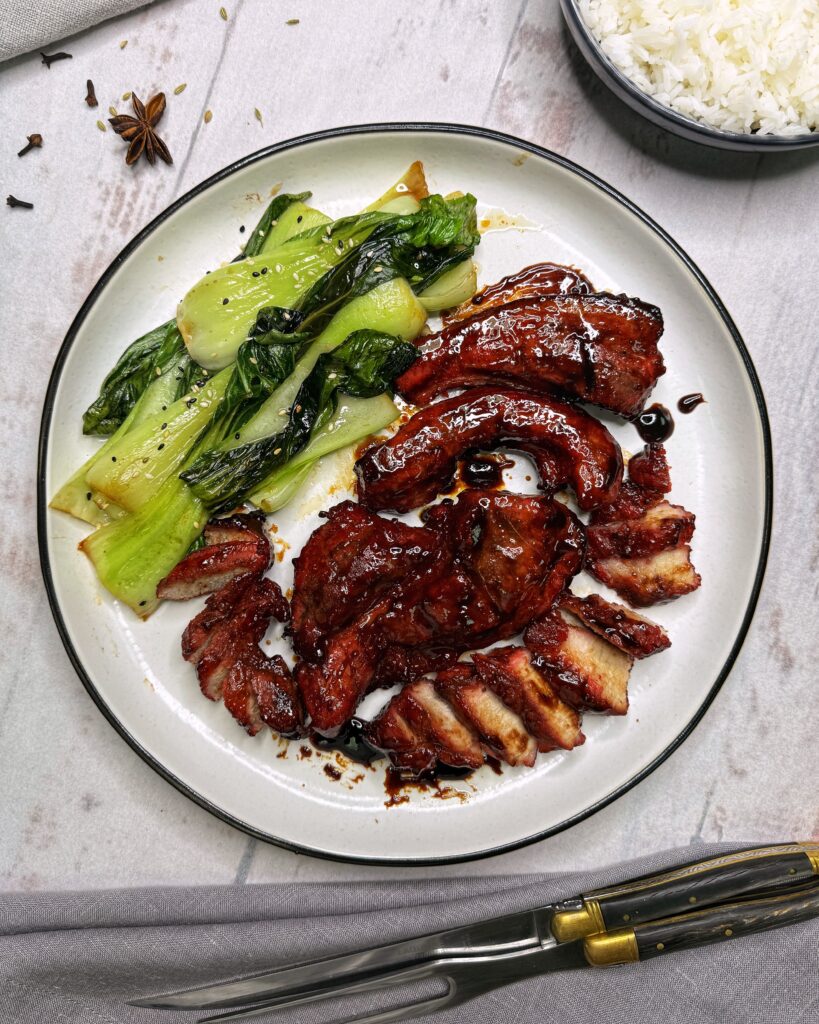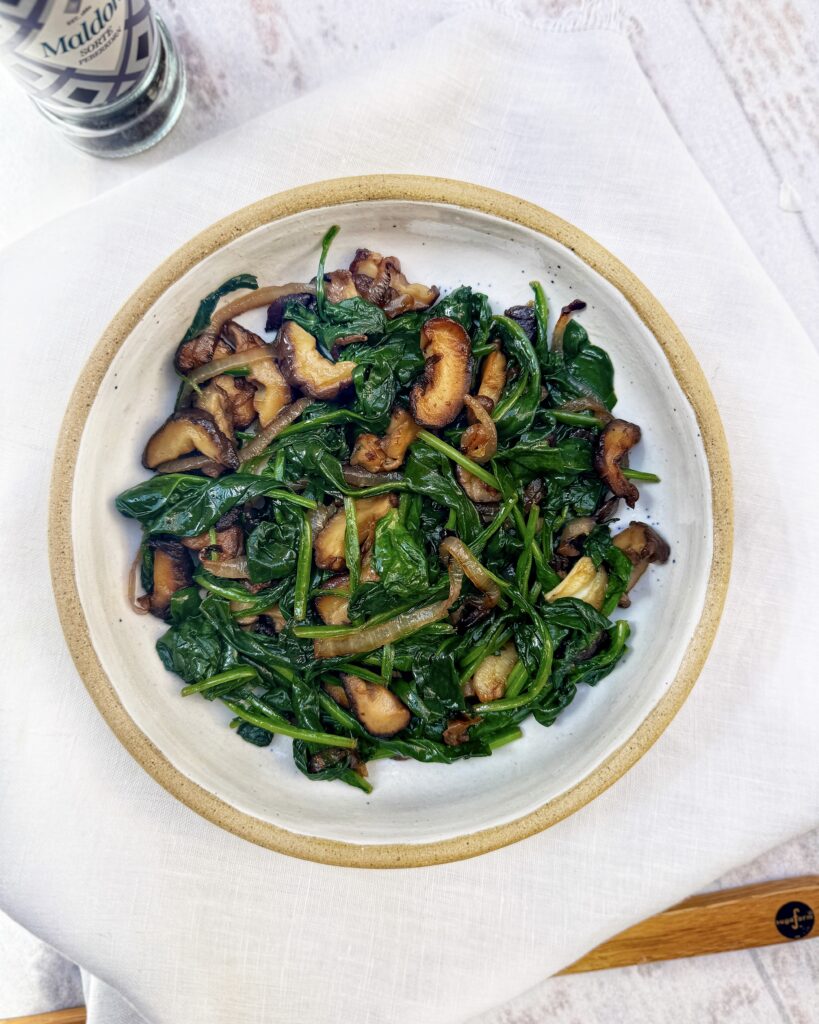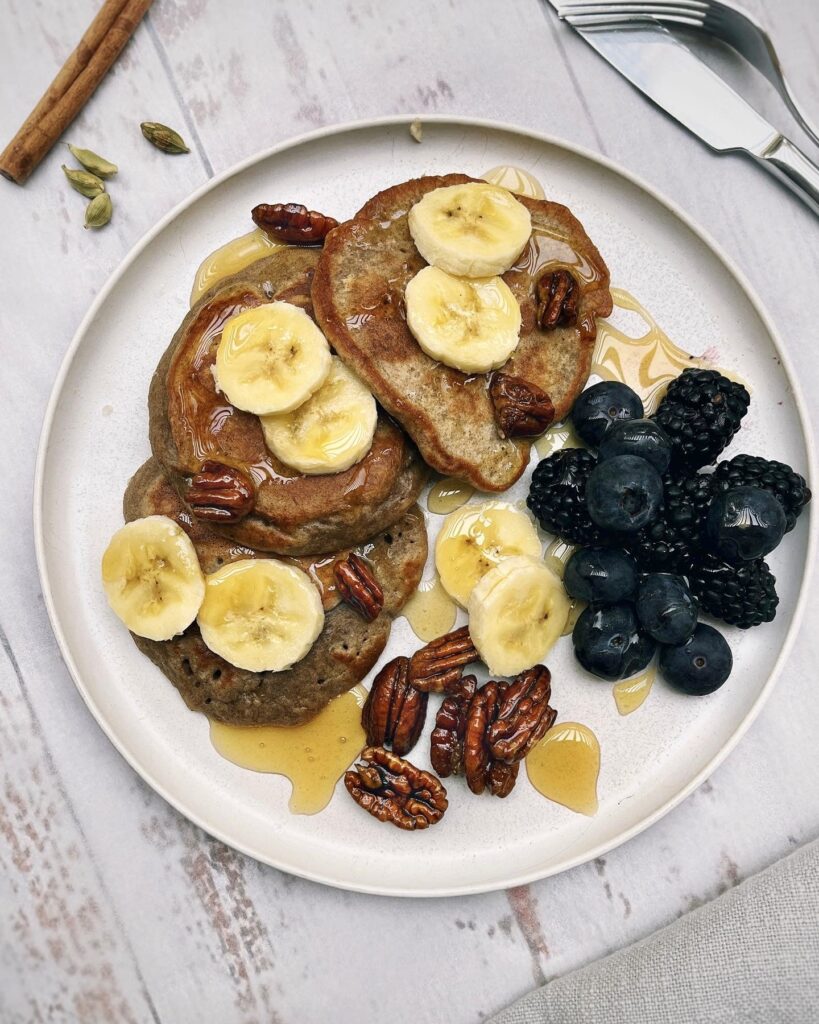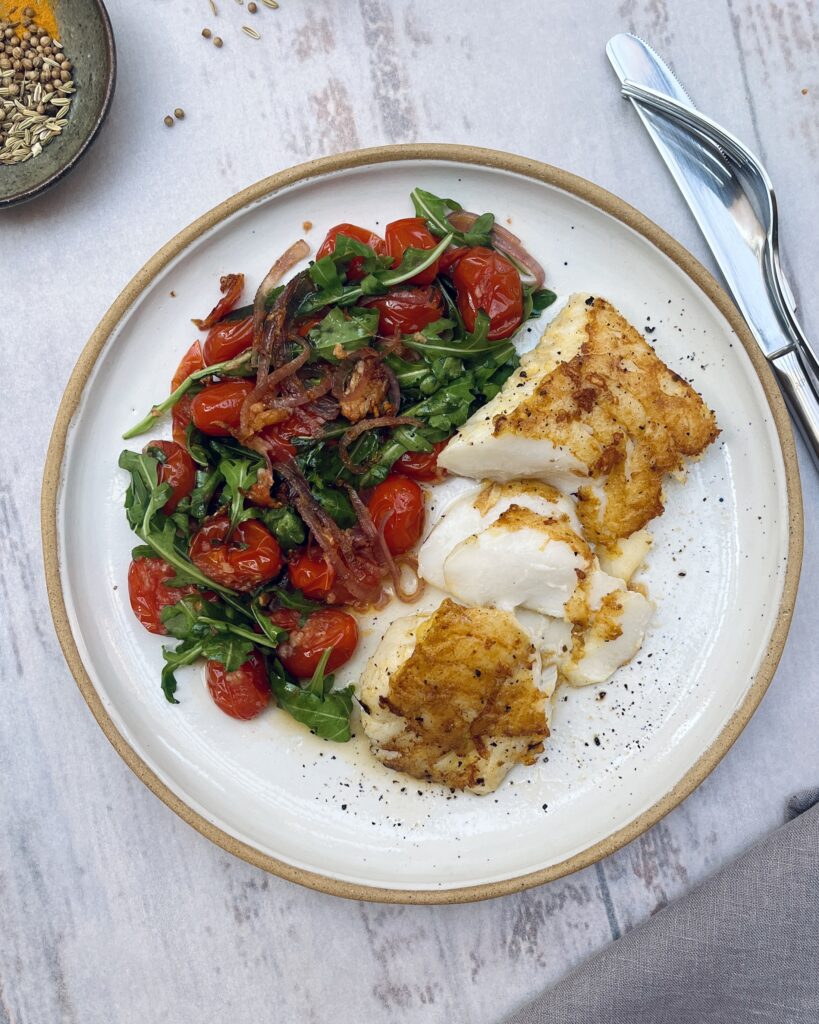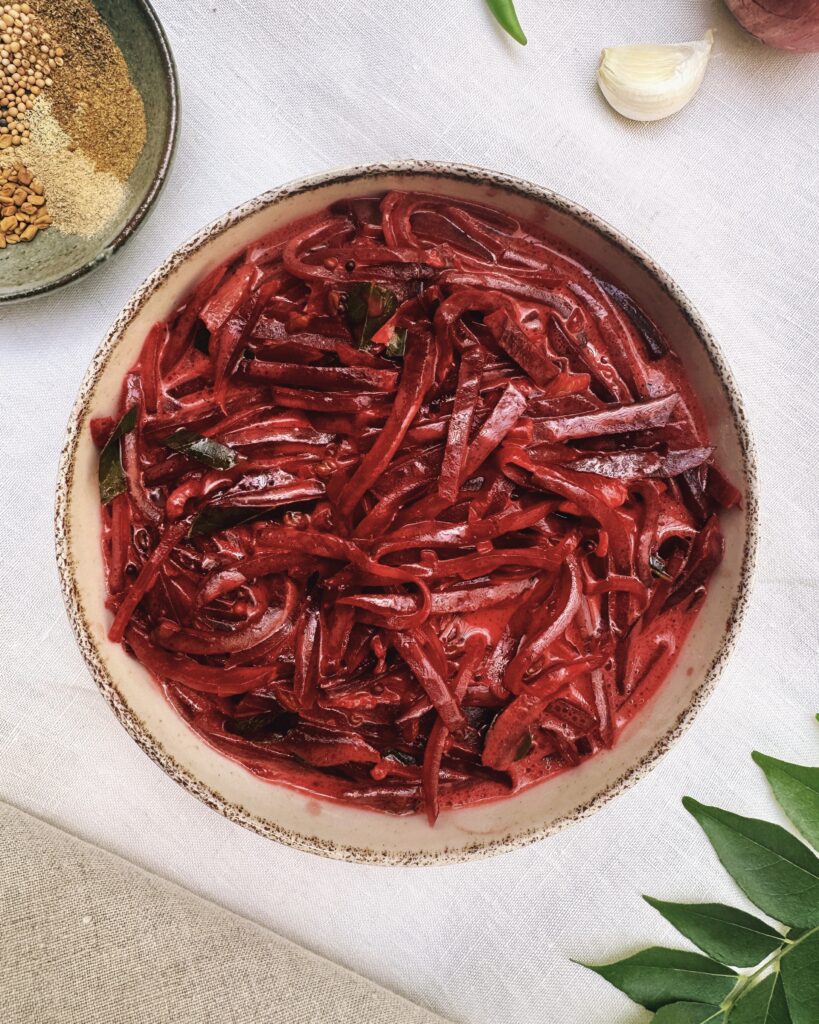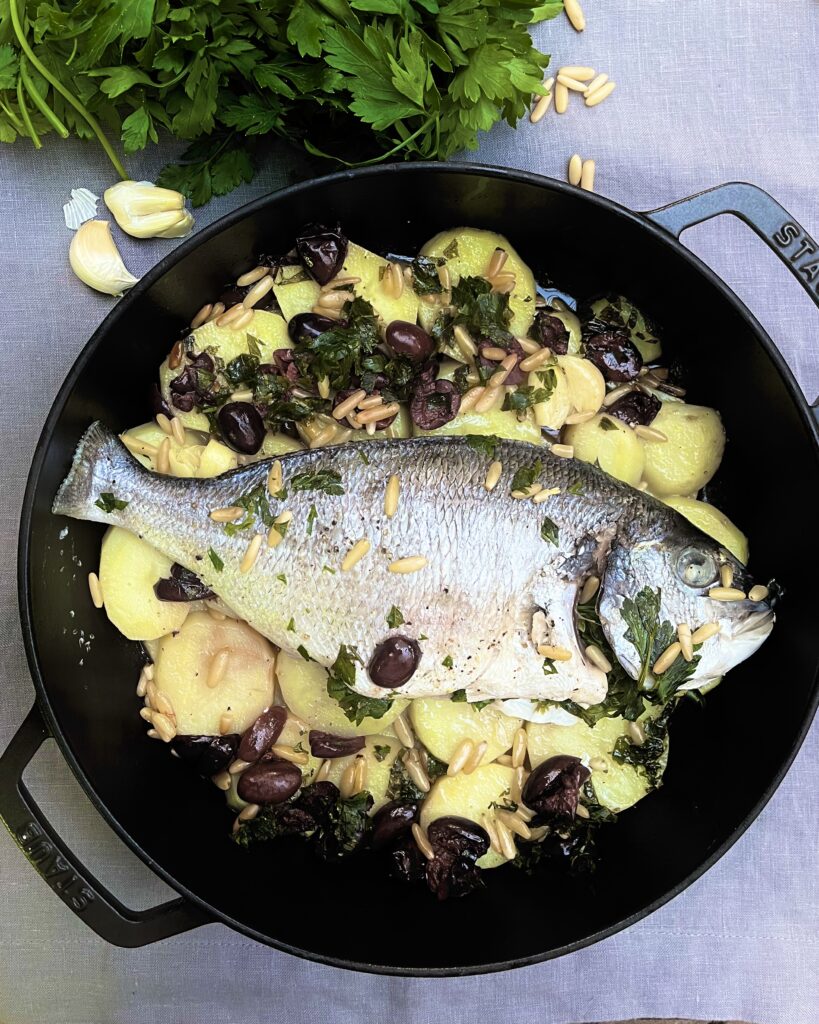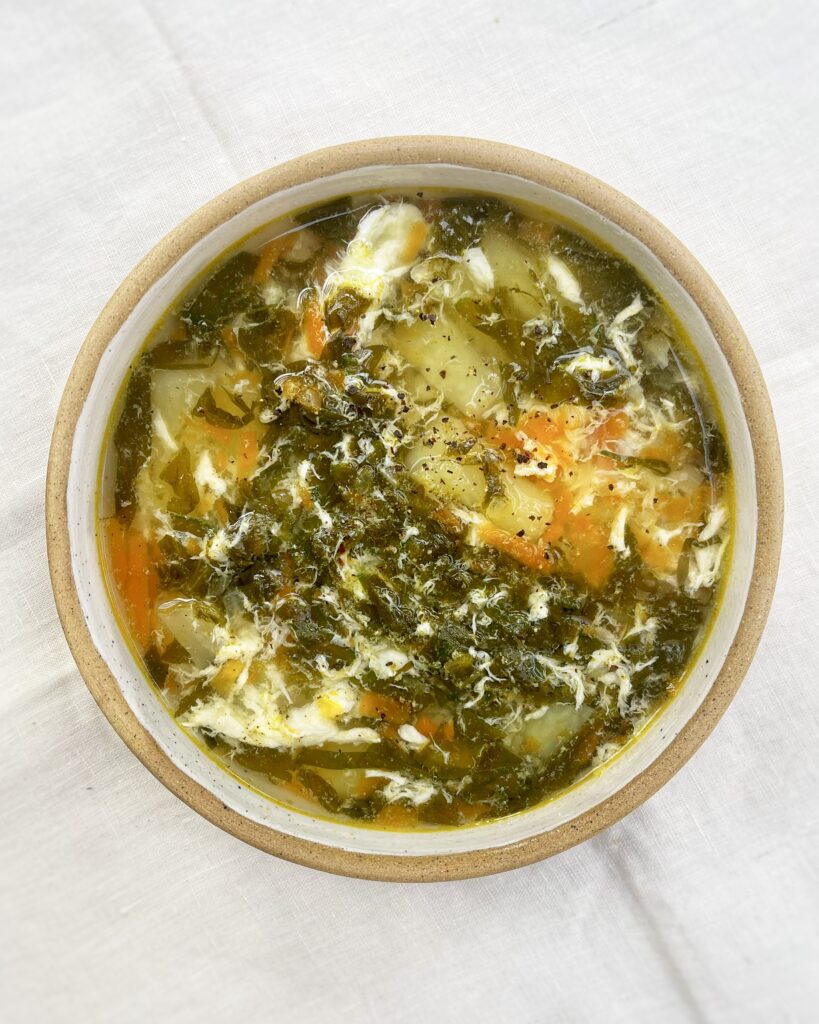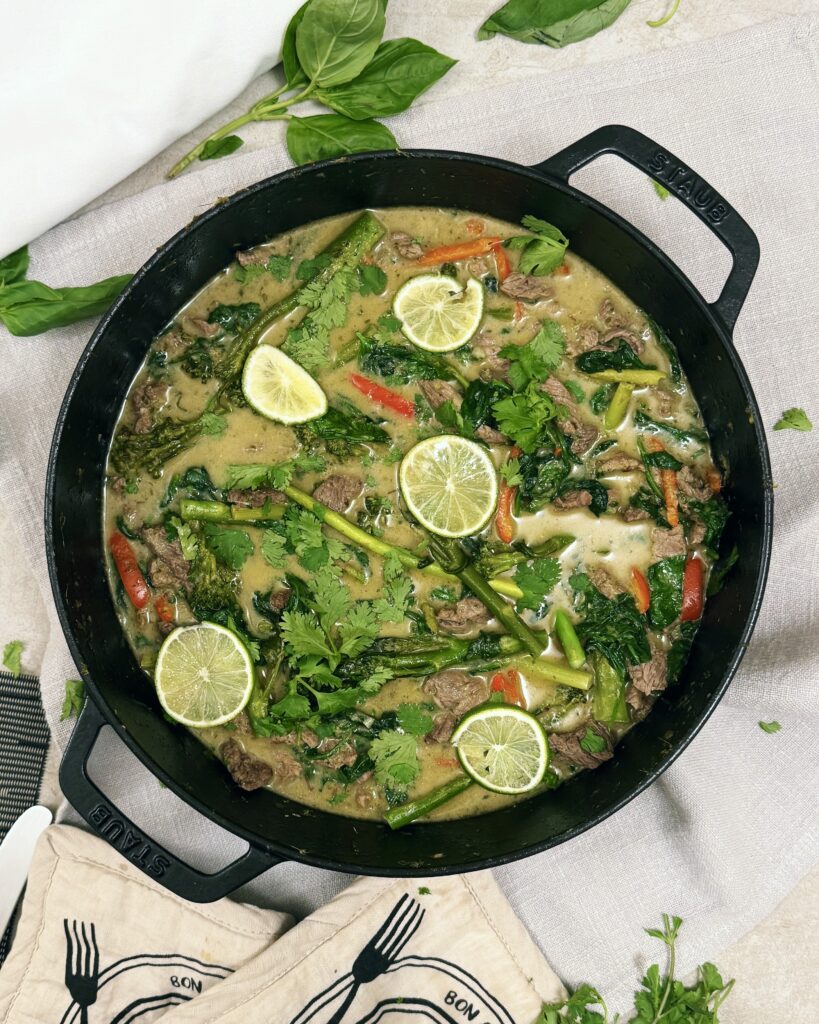
Thai green curry is a vibrant dish full of bright, zesty flavours. At the heart of it is the aromatic green curry paste. It contains green chilies, lemongrass, garlic, ginger, kaffir lime leaves, and fresh herbs like Thai basil and cilantro. You’ll often find it at the store, but homemade version is so much better! Don’t feel intimidated by the exotic ingredients – they are easy to source and the paste comes together in a blender in a matter of minutes. It then simmers in creamy coconut milk, which balances the heat and gives the curry its signature silky texture. A choice of vegetables and protein is entirely up to you! For this recipe, I picked beef and a bunch of veggies I had lying in the fridge.
Overview of the Ingredients:
The three major elements of a Thai green curry are: the paste, the vegetables, and the protein. Mix and match to find your own perfect combo!
Green Curry Paste
Green chilies: give the paste its signature heat. Their spice level can range from mild to fiery, depending on the variety. You can also adjust the quantities according to your heat tolerance.
Garlic: adds a pungent, savory depth that balances the brightness of the herbs. It also enhances the overall umami of the dish.
Shallots: provide a mild sweetness and gentle onion flavor. They help mellow the intensity of the other aromatics.
Lemongrass: offers a bright, citrusy aroma with subtle floral notes. It brings a fresh, zesty lift to the paste.
Galangal: has a sharp, peppery flavor with citrus undertones. Galangal is more pungent than ginger and gives the curry a distinct warmth.
Kaffir lime leaves: define the overall character of the dish with their intensely fragrant, citrusy aroma. An absolute must and indispensable element of the paste – do not skip!
Cilantro (coriander) roots or stems: earthy and slightly peppery, they add a deep, herbal flavor that differs from the leaves. They’re commonly used in Thai cuisine for their concentrated taste.
Thai basil: brings a sweet, slightly spicy note with a hint of anise. It adds a unique herbal layer to the flavor.
Cumin seeds: add a warm, nutty, and slightly smoky undertone. They help balance the brightness of the fresh ingredients. Can be swapped for ground cumin.
Coriander seeds: impart a citrusy, bitter-sweet flavor that deepens the aromatic profile of the paste. Can be swapped for ground coriander.
Once ready, the paste is gently fried in a little oil. Then, we add coconut milk or cream, as well as fish sauce. Fish sauce is very important because it brings in Thai’s signature umami flavour into the dish.
Vegetables
Tons of tasty veggie options here – Thai green curry is very flexible! Here are some great choices:
- Bell peppers – sweet, colorful, and they soak up the curry beautifully. Red, yellow, or green all work.
- Zucchini – mild and tender, it blends right in and adds a soft bite.
- Green beans or baby asparagus – crisp, fresh and firm, they hold up well in the curry.
- Eggplant – a less obvious fab option! They get silky and soak up all that delicious sauce.
- Carrots – sweet and sturdy, they add color and a bit of texture contrast.
- Baby corn – cute and crunchy! These bring a fun texture and mild sweetness.
- Bamboo shoots – classic in Thai curries, they’re tender and a little earthy.
- Spinach or kale – stir those in at the end for a healthy green boost.
- Snow peas or snap peas – light, crisp, and perfect for adding a little freshness.
- Broccoli – bitter-sweet, with florets soaking up the sauce and stems maintaining a firm, crunchy texture.
Feel free to mix and match! Go with what’s in your fridge or what you love.
Protein
Thai green curry is super versatile when it comes to protein, too – there’s something for everyone. It’s just the matter of adjusting the cooking times/techniques. Some popular versions include:
- Chicken – the classic choice. Add it at the beginning of cooking before the veggies so that it tenderizes and soaks up all the delicious flavours.
- Shrimp – fast, juicy, and perfect if you want something light but still satisfying. Goes in together with the vegetables.
- Beef – if you want more richness. For foolproof results, sear steak slices first then add them into the gravy once everything else has cooked. For tougher cuts, simmer them gently for longer until the meat becomes tender.
- Fish – mild white fish like cod or tilapia works great. Add towards the end and be gentle when stirring so it doesn’t flake apart.
- Tofu – a great plant-based option. Go for firm tofu so it holds its shape and absorbs all the sauce.
- Chickpeas – soft, creamy, and a super easy vegetarian protein. Just toss them in straight from the can together with all the veggies.
This time we are making beef curry so let’s take a closer look at the cooking process below.
Preparation Tips for Thai Green Curry with Beef:
- Make fresh green curry paste at home. You will be blown away buy the aromas – crisp, invigorating and uplifting! The quantities in this recipe are good for one large pot of curry. You can double or triple the ingredients and store the remaining paste in the fridge at least for a couple of weeks.
- Prep your veggies so that everything is ready and at hand – green curry cooks fast!
- Get a good quality steak – for example, bavette, flank steak, or strip loin. Slice it thinly and sear in batches over high heat, then set aside. We’ll add it back to the curry in the very end to make sure it doesn’t overcook.
- Fry the paste over medium heat in a little oil for 1-2 minutes. This allows it to release all the enticing aromas.
- Use either coconut milk or cream if you’d like a thicker gravy. Pour it straight into the paste, add two tea spoons of fish sauce and stir well to combine.
- You can then start adding vegetables straight away. Pace them based on cooking times. If using broccoli or carrots, they go first, followed by beans, baby corn and bell peppers. Things like green peas, zucchini or sprouts need very little time, and spinach or kale cook literally in a minute.
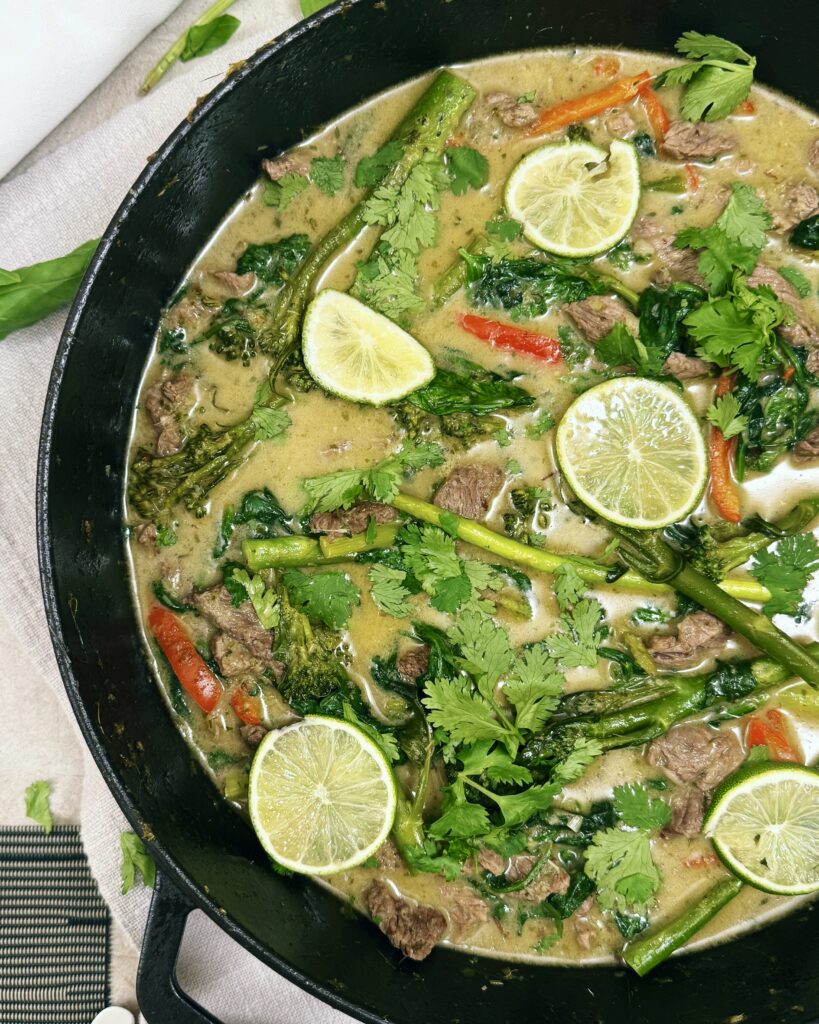
Serve over white rice, sprinkled with fresh cilantro leaves for an extra boost of freshness.
Make sure to also try our Yellow Curry Paste, great for Thai yellow curries like this one with prawns!
.
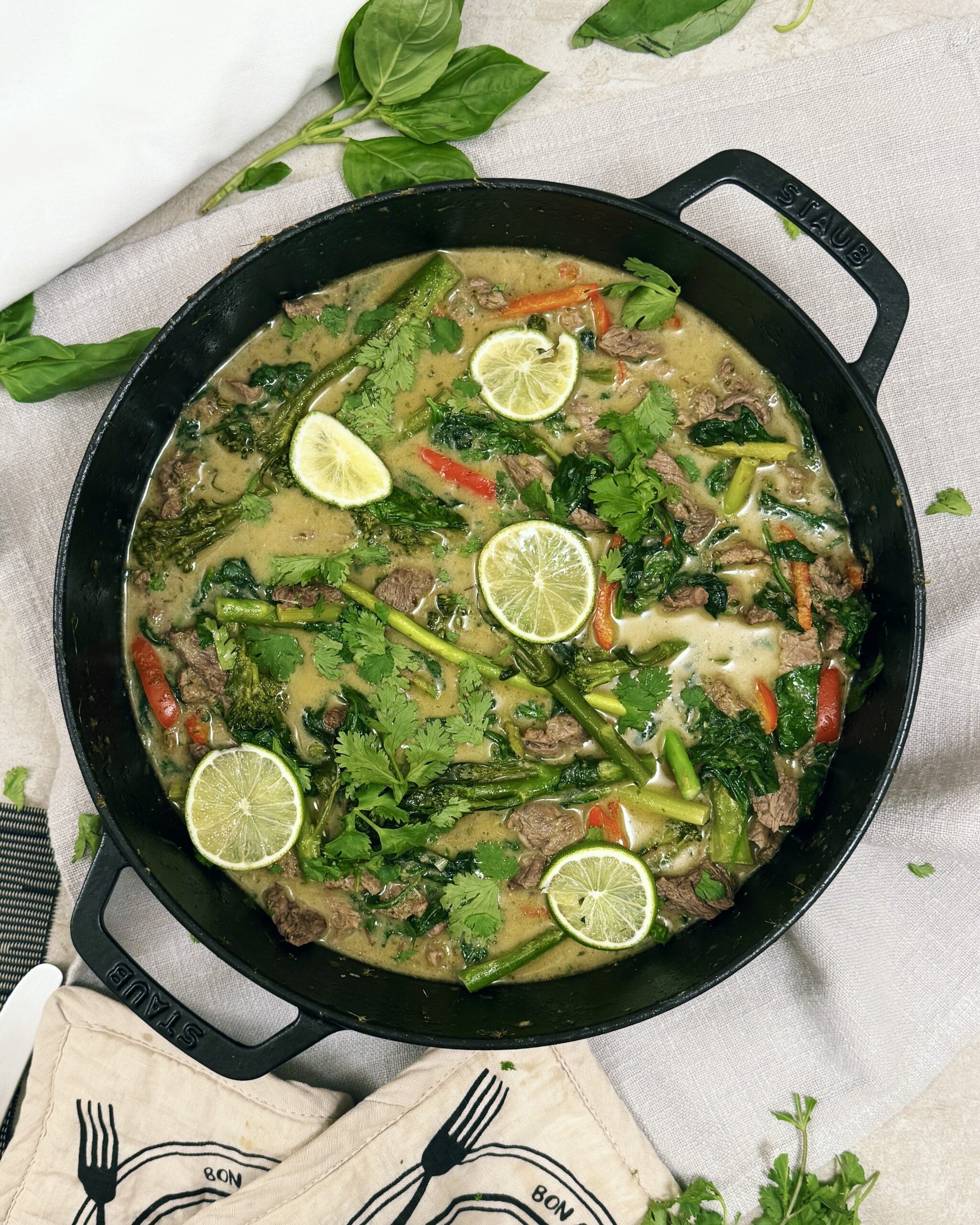
Thai Green Curry with Vegetables and Beef
Equipment
- 1 large skillet or pan
Ingredients
For the paste:
- 3 cm piece of galangal peeled (see notes)
- 4 garlic cloves peeled
- 1 shallot peeled
- 1 lemongrass stalk or 1 tbsp lemongrass paste
- 6-7 Thai basil leaves see notes
- 4-5 cilantro stalks with or without leaves
- 1/2 whole lime with zest
- 4-5 kaffir or makrut lime leaves
- 2-6 green chilies entirely up to your heat tolerance
- 1/2 tsp salt
- 1 tsp ground or whole coriander
- 1 tsp ground or whole cumin
For the curry:
- 4-5 tbsp green curry paste
- 2 tbsp cooking oil
- 400 ml coconut milk or cream
- 2 tsp fish sauce
- 800 g quality steak such as flank, skirt or bavette
- Mixed fresh vegetables such as broccoli green beans, peppers, baby corn, spinach etc
- A few fresh cilantro leaves for garnish
- White rice to serve
Instructions
- To make the paste, simply place all ingredients into a blender and blitz everything together. Don’t worry if the texture is not completely smooth – we are using fresh ingredients so a few bits and bobs are totally normal.
- Thinly slice the steaks against the grain. Sear over high heat in a little oil. Do this in batches to not overcrowd the pan. Remove from the pan and set aside.
- Lower the heat to medium and add 2 tbsp of cooking oil to the same pan.
- Add the green curry paste and fry for 40-60 seconds until the aromas develop. Since it has many fresh ingredients, you may experience some splatters so use an oil splatter shield.
- Pour in the coconut milk or cream, add 2 tsp of fish sauce and stir to combine.
- Taste and adjust for salt.
- Start adding the vegetables, pacing it based on their cooking times. Let simmer gently until they are done.
- Once the vegetables are cooked, add the steak slices together with their juices.
- Give everything another good mix and check the steak for doneness.
- Garnish with fresh cilantro leaves and serve over white rice.
Notes
- If you cannot source galangal, swap for ginger.
- If you cannot source Thai basil, swap for regular basil and add half a tea spoon of fennel seeds to the blender, or a couple of fennel greens.
- This curry is best enjoyed fresh. That is why I recommend to make more green curry paste and store it in the fridge in an airtight container. It can easily last for a few weeks.


